Eric Garcetti's First Year In Office, Reviewed
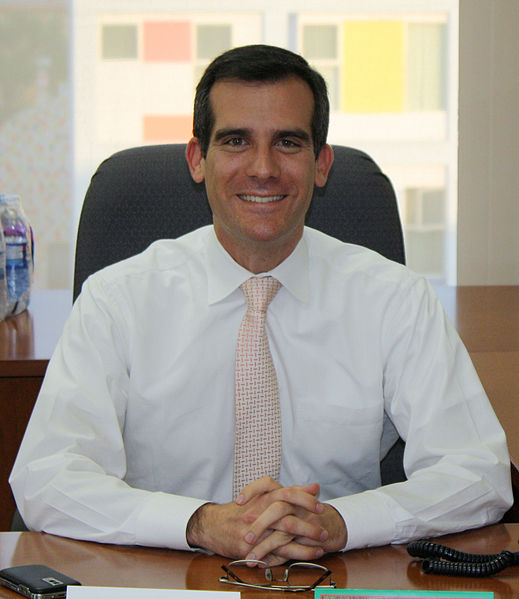
Eric Garcetti was sworn into office as Los Angeles’ 42nd mayor one year ago today. As far as we can tell, though, the traffic still sucks, the air is still dirty and the sidewalks are still broken. Garcetti entered office with high hopes of ushering in a new golden age for Los Angeles; yet critics have chastised the mayor for an absence of direction and a seeming inability to work within existing city structures.
Despite the charges raised by L.A. Weekly, Garcetti’s agenda, while somewhat nebulous, has focused on encouraging economic development around the city, promoting better livelihoods for its residents and increasing government transparency—an impressive feat considering how that other guy who used to work in city hall left things rather closed off.
Running a city is hard work for anyone, which is why we’ve decided to create a brief summary of some of Mayor Garcetti’s biggest actions during his first year in office.
READ MORE: A Local View On Eric Garcetti
TRANSPORTATION:
Rail
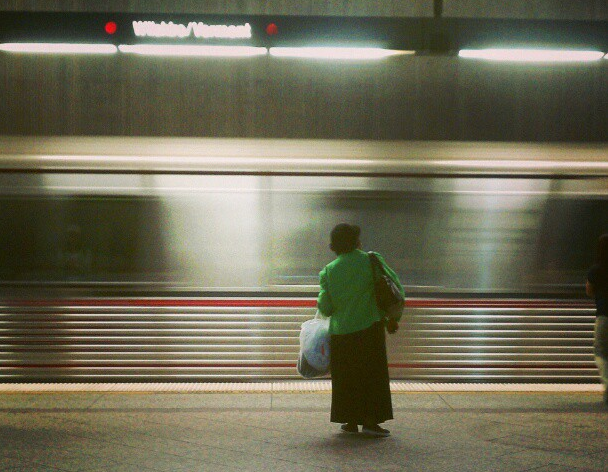
While some have accused Garcetti of making too many fund-seeking trips to Sacramento and Washington D.C., his travels finally paid off in May, when he and California Senator Barbara Boxer announced the dedication of $2.1 billion in federal funds for the extension of the Metro Purple Line to L.A.’s Westside.
But the fruits of Garcetti’s efforts—and for the sake of transparency, Villaraigosa’s too—remain years away. Even though preliminary construction started earlier this year, the line won’t reach its final stop at the VA hospital for about another decade.
Garcetti’s lobbying on Capitol Hill also helped secure $670 million for the construction of a Downtown L.A. Regional Connector, which will smooth rail transportation across L.A. County.
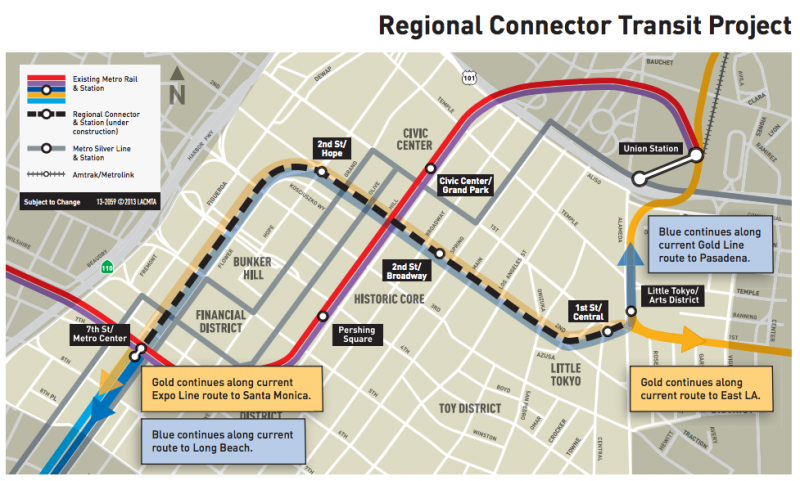
The connector will essentially tie the Blue, Expo and Gold lines all together, meaning that when it’s done, you’ll be able to take one train from Santa Monica to East L.A., or from Long Beach all the way north to Azusa. There will also be three new stops in Downtown too at 1st/Central, 2nd/Broadway, and 2nd/Hope.
Ridesharing
When Garcetti first took office, one of the biggest controversies in the city was whether or not ridesharing apps like Lyft and Uber should be allowed to function inside city limits.
Taxi drivers were firmly against the services, but Garcetti came out in strong support of the ride-sharing apps, saying that traditional taxi services needed to “adopt and adapt.”
Garcetti’s administration also ordered the city’s Taxi Czar, Tom Drischler, to stop talking to the media, after Drischler continuously slammed the services.
They're all just part of Garcetti's mission to usher in a new tech-age for Los Angeles.
Parking Tickets:
In 2013, Los Angeles derived about $150 million in revenue from parking tickets. Garcetti said during a reddit AMA that "tickets should be used to manage parking, not as a revenue source, and that is what I am going to look to do."
Despite his claim, however, Garcetti's budget for the 2014-2015 fiscal year includes funding for an additional 50 part-time parking enforcement officers. 50 more people obviously to manage city parking, and certainly not to try and raise some more money for city coffers.
READ MORE: City Tells Ridesharing Apps Lyft, Uber, Sidecar To Shut Down
LIVABILITY:
LA River Redux
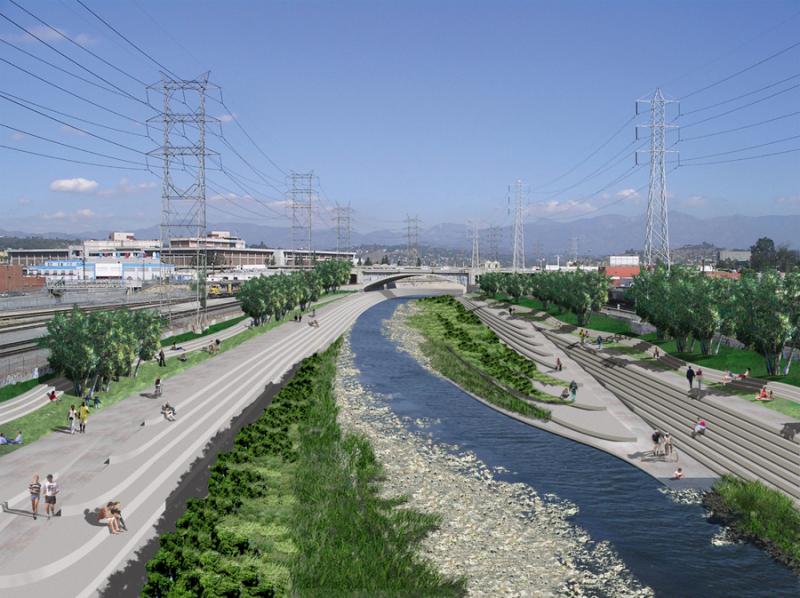
In addition to the $2.8 billion that the federal government gave to L.A. for rail development, Garcetti also successfully persuaded the Army Corps of Engineers to dedicate $1 billion dollars to overhauling the L.A. River.
Garcetti, along with Senator Boxer, pushed for the plan after the Corps had released plans for a less expensive project.
It took the mayor just two days to convince Washington to up the ante. “I personally want to thank President Obama for listening to me so many times on the L.A. River,” Garcetti proudly announced.
The current plan will revamp about 11 miles of river between Glendale and Downtown, creating lots of new natural habitat and green space for Angelenos and animals alike.
Great Streets Initiative
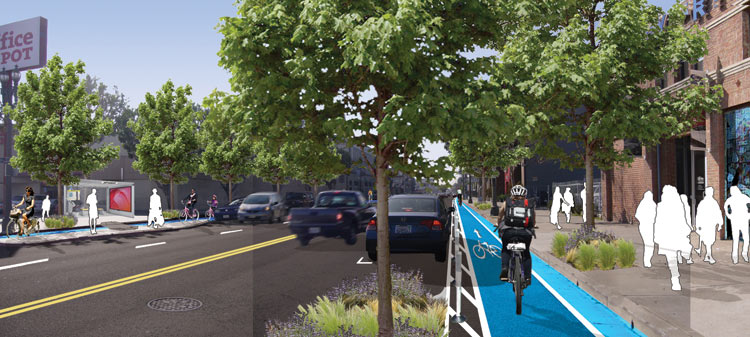
Projects can include anything from bike corrals, repaired sidewalks, road diets and even entire landscaping projects (like we saw on Larchmont). The 15 streets can be found all over the city, with even the Valley finally getting some attention on Nordoff, Reseda, and Lankershim.
However, the initiative isn’t without its critics. $800,000 can look rather tame next to he $1.8 billion spent on the 405-widening project, but it’s better than nothing for now. It's worth noting that a stupendous preview of what our streets can become is the MyFigueroa project, set to transform the boulevard into a pedestrian and cycling heaven by 2016.
READ MORE: Angelenos React To My Figueroa
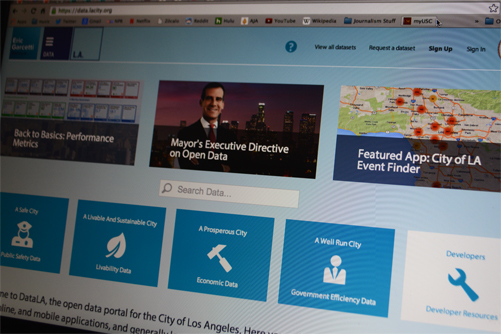
A BETTER GOVERNMENT:
Open Data
One of Garcetti’s key campaign platforms was the promise that he was going to be Los Angeles’ first “Tech-Mayor.” A key step forward came earlier this year when the Mayor announced the city’s new Open-Data website, paired with a hack-a-thon.
Open-Data is Garcetti’s effort to make city government more transparent, with a variety of public statistics—like police-response times and city salaries—all in one place for citizens to access.
The hack-a-thon enlisted some of the city’s best coders in an attempt to develop useful applications for residents using the city data. Although the hack-a-thon didn’t quite go as well as people had hoped—with many developers saying that they needed more data in order to create useful applications—the Open Data program is helping Los Angeles catch up to other high-tech cities like N.Y.C. and Chicago that already have city-data easily accessible online.
DWP Reform
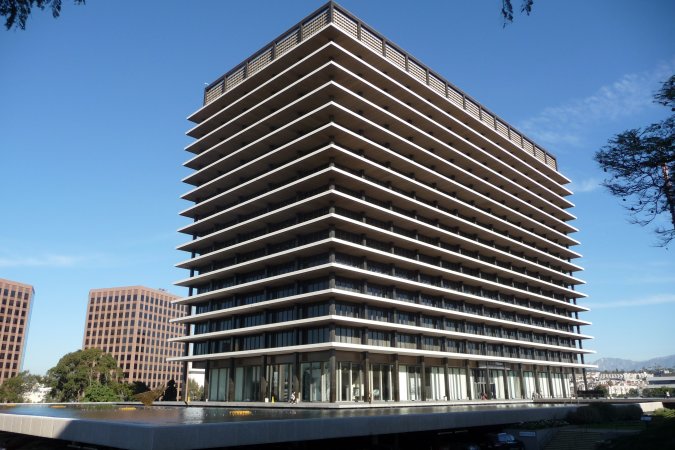
While he was campaigning, one of Garcetti’s biggest advantages over competitor Wendy Greuel was his lack of connection to the Los Angeles Department of Water and Power. The nature of this undesirable connection arises from the fact that the DWP has been ridiculed for providing excessive salaries and pension benefits for its employees, while failing to maintain satisfactory service around Los Angeles.
One of Garcetti’s first actions as mayors was to sign Council File 13-1459, a contract authorizing a stay on DWP salaries for at least three years. Garcetti also appointed a new head for the Department, Marcie Edwards, Anaheim’s former city-manager.
It’s a work in progress, but progress is certainly being made, even if it takes the form of suing the DWP’s union for transparency. Garcetti’s office launched the lawsuit after records revealed that the DWP Union’s two nonprofit agencies spent more than $40 million over the past decade.
READ MORE: Los Angeles Reveiws DWP Spending
JOBS/ECONOMY
Summer Youth Employment
Announced at his State of the City Address, Garcetti’s Summer Youths Jobs Program aims to employ low-income young people, by placing them into entry-level jobs around the city for the summer. The program is a part of the larger “Summer of Success” initiative, focusing on community, employment, and education in some of Los Angeles toughest neighborhoods.
The jobs program aims to directly place about 10,000 people aged 14-24 in a position for summer, helping to both keep them out of trouble and help make rent at the end of the month.
Jobs for Veterans
Similar to the Summer Youth Jobs program, Garcetti’s office has also developed a program to place 10,000 veterans in jobs over the next three years.
The program will work through the city’s work-source centers, where workers will connect veterans to the 100 companies and 40 nonprofits that have signed on to earmark jobs for veterans through the city. Among others, Safeway, Dreamworks Pictures, and Coca-Cola will be participating.
A city website for veterans will go online this July.
Contact Staff Reporter Matthew Tinoco here. Follow him on Twitter.



